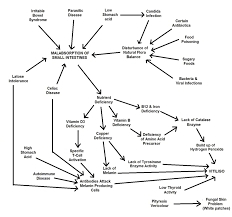Vitiligo Disease
Vitiligo is a skin condition characterized by the loss of pigment or color in patches on the skin. It occurs when the melanocytes, which are the cells responsible for producing the pigment melanin, are destroyed or stop functioning properly. The exact cause of vitiligo is not fully understood, but it is believed to be an autoimmune disorder, in which the body's immune system attacks and destroys its own melanocytes.
Vitiligo can affect any part of the body, including the face, hands, feet, and genital area. The patches of depigmented skin may be small or large, and they can appear in different shapes and patterns. The condition is not contagious and does not cause any physical harm, but it can have a significant impact on a person's self-esteem and quality of life, particularly if the patches are noticeable and affect visible areas of the skin.
There is no cure for vitiligo, but there are treatments available that can help to restore some of the lost pigment and improve the appearance of the affected skin. These treatments may include topical corticosteroids, phototherapy, and skin grafting. In addition, there are various cosmetic options available, such as makeup, self-tanning products, and tattoos, that can help to conceal the depigmented patches.
If you suspect that you may have vitiligo or are concerned about changes in your skin, it is important to consult a dermatologist for an accurate diagnosis and appropriate treatment.
While vitiligo does not cause physical harm, it can have significant psychological and emotional impact on those affected. The depigmented patches may cause distress, particularly if they are noticeable and affect visible areas of the skin, such as the face or hands. People with vitiligo may feel self-conscious, embarrassed, or stigmatized due to their appearance, leading to social isolation and a reduced quality of life.
In addition, people with vitiligo may be at increased risk for other autoimmune disorders, such as thyroid disease, rheumatoid arthritis, and lupus. It is important for people with vitiligo to be aware of these risks and to receive appropriate medical care to monitor and manage their health.
Treatment options for vitiligo aim to restore pigment to the affected areas of skin and may include:
1. Topical corticosteroids: These are creams or ointments that can be applied directly to the affected skin to help reduce inflammation and encourage repigmentation.
2. Phototherapy: This involves exposure to ultraviolet light to stimulate melanocytes and promote repigmentation. Phototherapy can be administered in a doctor's office or at home using a handheld device.
3. Skin grafting: This involves transplanting healthy skin from one part of the body to the affected areas of skin. This can be an effective option for those with small patches of vitiligo.
4. Depigmentation: This involves lightening the remaining pigmented areas of skin to match the depigmented areas. This option is typically used for those with widespread vitiligo who have not responded to other treatments.
5. Cosmetics: Various cosmetic options, such as makeup, self-tanning products, and tattoos, can be used to conceal the depigmented patches and improve the appearance of the skin.
It is important to note that the effectiveness of these treatments can vary, and not all treatments may be suitable for everyone. It is best to consult with a dermatologist to discuss the available treatment options and determine the most appropriate course of action based on individual needs and preferences.
Research on vitiligo is ongoing, and there are promising developments in the field. For instance, some studies suggest that certain dietary changes and supplements, such as vitamin D and antioxidants, may help to improve vitiligo symptoms. However, more research is needed to confirm the effectiveness of these interventions.
In addition, there are several ongoing clinical trials investigating new treatments for vitiligo, such as Janus kinase (JAK) inhibitors, which work by blocking the activity of certain immune cells that attack melanocytes. These drugs have shown promising results in early studies and may offer a new option for treating vitiligo in the future.
It is also important for people with vitiligo to practice good sun protection, as areas of depigmented skin are more sensitive to sun damage and can increase the risk of skin cancer. Wearing protective clothing, using sunscreen, and avoiding sun exposure during peak hours can help to protect the skin.
Finally, support groups and counseling can also be helpful for those with vitiligo, as they can provide emotional support and resources for coping with the condition. Many organizations, such as the Vitiligo Research Foundation and the National Vitiligo Foundation, offer resources and support for people with vitiligo and their families.



































